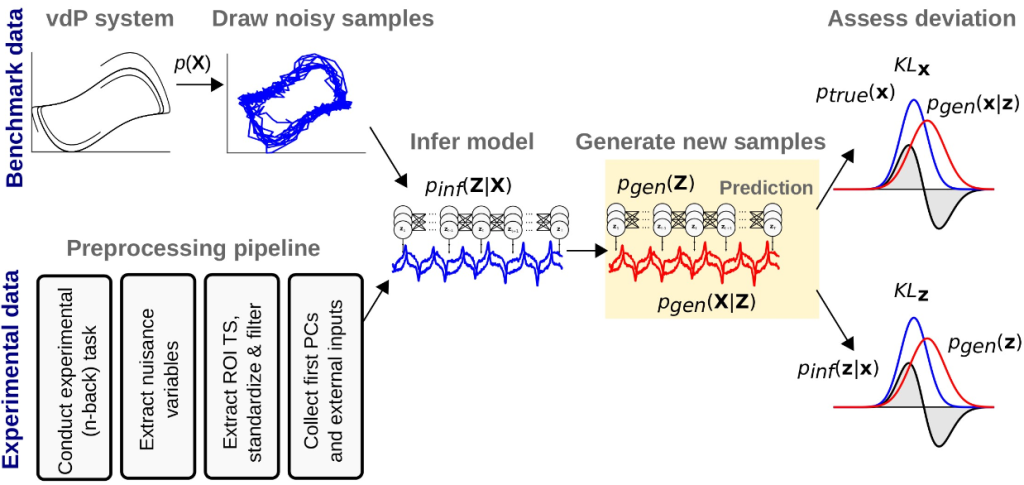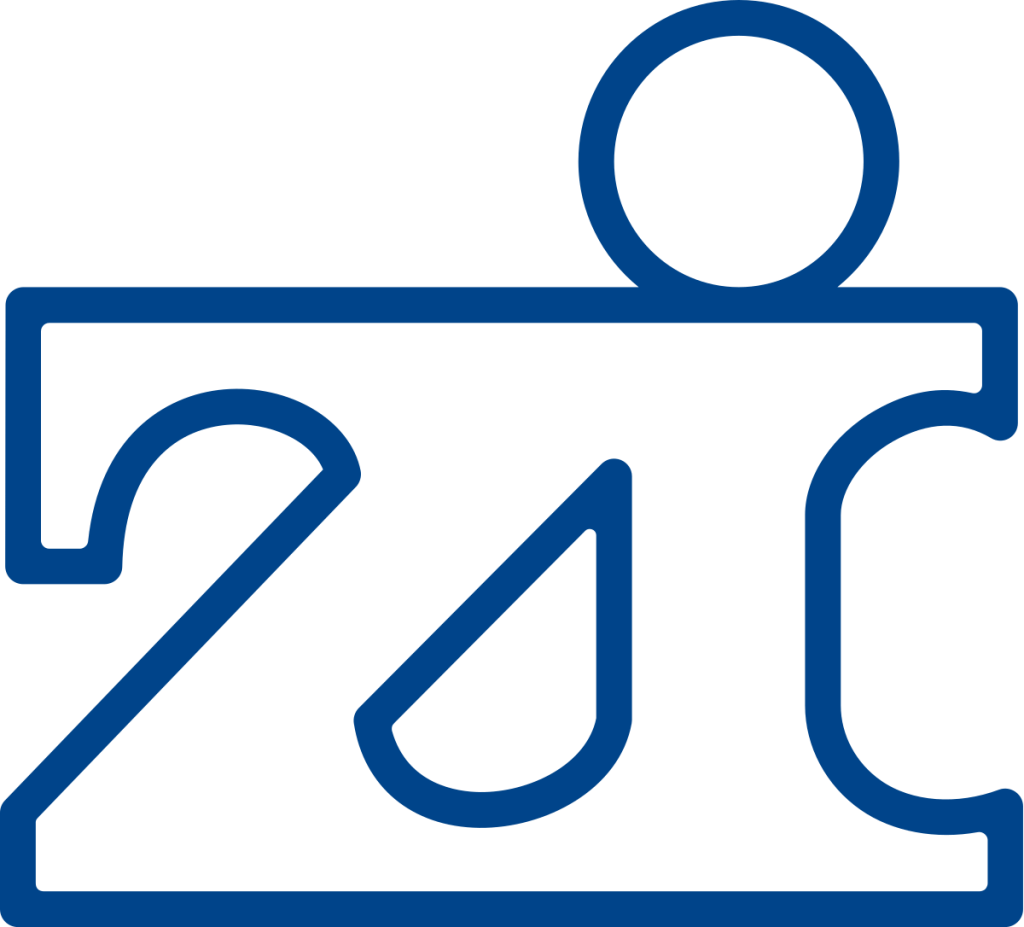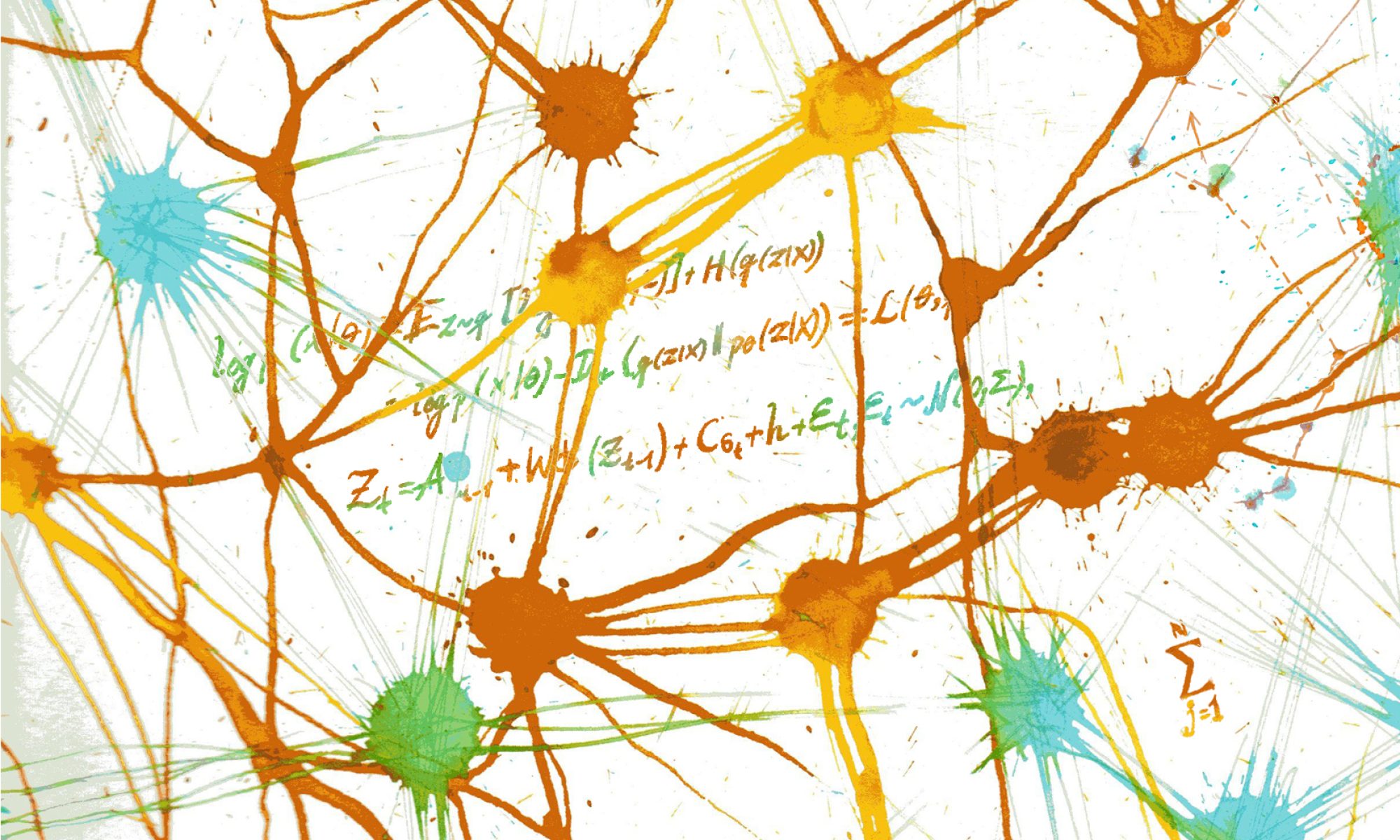Welcome! This is the lab webpage of the theoretical neuroscience group at the Central Institute of Mental Health in Mannheim.
Our group currently works on three major research lines:
1. Theoretical and scientific machine learning
We work on models and training algorithms for dynamical systems reconstruction (DSR) and time series analysis, and their theoretical/ mathematical underpinnings (work supported by different DFG individual grants and within Excellence Cluster Structures).
Our major theoretical workhorse is dynamical systems theory, a general and beautiful mathematical framework for analyzing any (natural or engineered) process that evolves in time and space, and that in science we usually describe by systems of differential or recursive equations. By dynamical systems reconstruction we mean deep learning algorithms that infer a generative model of the dynamical processes, or governing equations, that underlie the data observed. In a sense, the idea is to automatize the scientific discovery process: Rather than relying on cycles of human insight and intuition for conceiving mathematical models of the world and iterative refinement after experimental testing, our idea is to derive such models directly and automatically from observed time series and other sources of data.

We call this class of models ‘Neural Flow Operators (NFOs)’, as the central idea behind them is to approximate the flow (solution) operator of the underlying dynamical system. In the last couple of years, we have built state-of-the-art training algorithms and models, based on theoretical insights, with excellent performance even on challenging, noisy, non-stationary, high-dimensional empirical data (like multivariate physiological recordings of any kind, or behavioral data), e.g. Schmidt et al. (2021), Brenner et al. (2022), Mikhaeil et al. (2022), Hess et al. (2023).

Currently we are progressing in the following directions:
- Models that are interpretable and mathematically tractable, and algorithms that automatically retrieve dynamically (scientifically) relevant structure from trained NFO/DSR models (like different attractor states), e.g. Monfared & Durstewitz (2020), Eisenmann et al. (2023).
- Multi-modal data integration in NFO/DSR models, i.e. if several data streams with different statistical properties (e.g., spike counts and behavioral categories) are simultaneously available for model training, or if the observed random variables are discrete and non-Gaussian (e.g., point processes), e.g. Kramer et al. (2022), Brenner et al. (2022).
- Non-autonomous NFO/DSR models for anticipating tipping points and predicting post-tipping-point dynamics.
Besides this major focus, in the past we have also been working on many more specific ML algorithms for time series analysis, like for efficient detection and statistical testing of spatio-temporal patterns (Russo & Durstewitz, 2017) or change (tipping) points (Toutounji & Durstewitz, 2018) in multivariate time series.
2. Applications in neuroscience and neuro-AI
We use our methodological tools to study, together with many experimental partners (especially within the DFG FOR-5159), the neural code, the language of the brain, and neural computations underlying multiple task performance and behavior. NFO/DSR models can be used to directly infer from multi-single-unit recordings, Ca2+ imaging or fMRI data, possibly in combination with behavior, dynamical models of the underlying computational processes, which then can be mathematically analyzed, perturbed, or simulated for scientific understanding and insight (e.g. Durstewitz 2017, Koppe et al. 2019, Kramer et al. 2021, Durstewitz et al. 2023).

We are particularly interested in prefrontal cortex and prefrontal-hippocampal interactions (e.g. Domanski et al. 2023) in long working memory, sequence learning and recall, and attention processes, as these are core processes also believed to be crucial to the impressive performance of Transformers, large language models, or modern recurrent neural networks and state space models, thus with the potential of inspiring improved AI designs. Another line of neuroscience research with potentially huge impact on AI is that of behavioral strategy learning: We investigate the processes that lead animals to systematically probe and explore different behavioral strategies when environmental contingencies change or new task contexts are encountered for the first time (Durstewitz et al. 2010, Russo et al. 2021, Bähner et al. 2022). We observed that rodents systematically test different behavioral hypotheses and exhibit sudden performance jumps when task contingencies are altered, rather than improving gradually, results incompatible with, and non-reproducible by, standard reinforcement learning algorithms. Our hope is to derive new AI learning algorithms based on such insights.
3. Applications in (mental) health
In collaboration with groups at the Central Institute of Mental Health in Mannheim (in particular the Dept. of Public Mental Health led by Prof. Ulrich Reininghaus) and international partners, we work on various problems relevant to psychiatry and mental health prevention. One set of projects situated within the DFG TRR-265 on drug addiction, the European consortium IMMERSE and an AI Living Lab on mental health prevention in younger adults, is concerned with predicting behavioral trajectories from mobile data and ecological momentary assessments (EMAs; e.g. Durstewitz et al. 2019, Fechtelpeter et al. 2023). This serves to identify maladaptive behavioral patterns, or predict tipping points toward such behavior, and provide according feedback to the subjects, or to select optimal momentary ecological interventions (EMIs) from a repertoire of coping strategies in control loops with the subjects.

Other projects deal with diagnosing and refining psychiatric and neurological conditions (e.g. Thome et al. 2022, Durstewitz et al. 2021) based on dynamical systems features extracted from neuroimaging data (partly together with the group of Prof. Emanuel Schwarz), predicting tipping points toward sepsis in intensive care unit (ICU) patients (together with Prof. Verena Schneider-Lindner; within AI Health Innovation Cluster), or inferring dynamical signatures of anesthesia depth from electrophysiological recordings and Ca2+ imaging (with Prof. Simon Wiegert within AI Health Innovation Cluster), all based on our NFO/DSR architectures.

